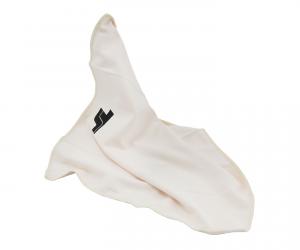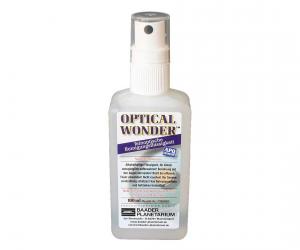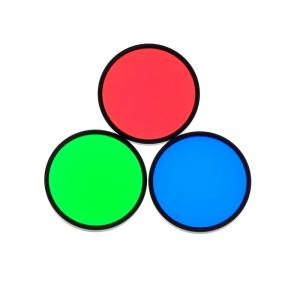- Telescopes
- Overview:
Telescopes - Achromatic Refractor
- Apochromatic Refractor
- Overview:
Apochromatic Refractor - ED Refractor - less color aberration than an achromatic
- SD APO - color free 2-element APO objective
- EDT APO - 3 element ED objective
- High End APO with 3-element APO objective - no color aberation
- Flatfield APO with flat field for Astrophotography
- All Apos and EDs from all manufacturers - large overview
- TS APO and ED from Japan with high quality optics
- Overview:
- Newtonian Telescopes
- Dobsonian Telescopes
- RC Ritchey Chretien Telescopes
- Casssegrain Telescopes
- Reflektor Telescopce with Lens Correcture
- Maksutov Cassegrain Telescopes
- GoTo Telescopes
- Solar Telescopes H-Alpha
- Overview:
- Mounts Tripods Rings Rails Power Supply ...
- Overview:
Mounts Tripods Rings Rails Power Supply ... - Mounts Equatorial with GoTo
- Mounts Equatorial without GoTo
- Mounts Azimutal with GoTo
- Mounts Azimutal without GoTo
- Mounts GoTo - Harmonic Drive
- Travel mounts for astro imaging
- Tripods Piers Polar Wedges
- Mount Control & Electronics
- Dovetail Clamps, Plates and Mount Adapters
- Tube Rings
- Power Supply
- Counterweights Balance Weights
- Mount Accessories - Other
- Overview:
- Telescope Accessories
- Overview:
Telescope Accessories - Eyepieces
- Barlows & Reducer Lenses
- Diagonal Mirrors and Prisms
- Binocular Viewers
- Finder Scopes
- Telescope Collimation and Test
- Cleaning Tools
- Transport and Storage
- Dust protection for Telescopes & Accessories
- Stray Light Protection
- Dewcaps and Heater
- Focusers, Adapters, Motorfocus
- Telescope DIY & Improvement
- Other telescope accessories
- Replacement Parts
- Overview:
- Filters
- Overview:
Filters - Color Filters and Color Filtersets
- Nebular Filters for Visual Observing
- Neutral-Density and Polfilter
- Photo Narrowband Nebular Filters
- Photo Broadband Filters
- Photo Planetary Filters
- Photo R-G-B and IR Cut Filters
- Photo - Filtersets
- Photometric Filters
- Clip Filter for DSLR Cameras
- Filter Wheels and Filterslider
- Solar Filters for white light
- Solarfilter for H-Alpha and Calcium
- Overview:
- Adaptors
- Overview:
Adaptors - Adapter 1,25" and 24,5mm
- Adapter 2"
- Adapter T2 - M42x0.75
- Adapter M48x0,75
- Adapter M54
- Adapter SC
- Adapter M63
- Adapter M68
- Adapter to other Threads
- Adapter Extensions
- Adapter camera bayonet
- Adapter Objective Filterthread
- Adapter Quick Changing , Rotation
- Adapter Eyepiece Projection
- Adapters Tilting
- Overview:
- Astrophotography and Photography
- Overview:
Astrophotography and Photography - Cooled Cameras
- Cameras without Cooling
- Deep-Sky Cameras uncooled
- Set-Offers Camera, Filter, Wheels
- Acessories for Cameras
- Travel mounts for astro imaging
- Imaging Correctors for Telescopes
- Autoguiding Cameras & Sets
- Everything for Guiding
- Focusing aids - Bahtinov mascs
- Flat Field foils and boxes
- Lenses for Cameras
- Piggyback Camera Holder
- Camera Bags, Photocases & more
- Digital Camera and Smartphone Adapter
- Other photo accessories
- Overview:
- Binoculars, Spotting Scopes, Microscopes, Range Finders
- Overview:
Binoculars, Spotting Scopes, Microscopes, Range Finders - Roof Prism Binoculars
- Binoculars with Porro prisms
- Binoculars from 100mm Aperture
- Binoculars with 1,25 inch eyepieces
- TSMX APO Binoculars
- Binoculars for Astronomy
- Binoculars Hiking Bird watching
- Monoculars - Opera Binoculars
- Accessories for Binoculars
- Spotting Scopes
- Range Finders
- Microscopy
- Bags for Phototripods & Binoculars
- Overview:
- Phototripods and Binomounts
- Books, Software
- Overview:
Books, Software - Books for Astronomy Beginners
- Star Charts and Planispheres
- Books about our Solar System
- Observing Tips for Amateurs
- Popular Astronomy Literature
- Teaching material
- Astrophotography books
- Telescopes, Observatories, Construction
- Calendars Yearbooks
- Software, Star Charts
- Books for Microscopers
- Books Nature and Animals
- Nature Photography TimeLapse
- Overview:
- Night Vision, Magnifiers, Weather, Domes & more
- Beginner Astronomy and Gift Ideas
- Second Hand & Special Offers
- New products
Manufacturer: Astronomik Filter
Product number: 8h00gf
EUR389.00new
EUR 389,00
incl. 19 % VAT (DE)
The VAT indicated refers to that applicable in Germany. After logging in, the VAT amount is adjusted to the applicable VAT of the stored delivery country. Therefore, the final price may vary accordingly.
excl. 6.95 € shipping costs (DE)
more details to the shipping costs ...Please log in to calculate shipping costs to your country.
There are no reviews for this product
- Details..
- Technical data..
- In the box..
- Manufacturer infos..
- Safety informations..
A filter set especially designed for astrophotography with CCD and CMOS cameras. These filters provide a natural color reproduction of planets, stars, emission and reflection nebulae.
The transmission properties of the L-RGB Typ 2c filters are optimized for CCD and CMOS astrophotography. The set allows to take images in correct colour for all types of objects. Where other brands make strange compromises, Astronomik does the best colour reproduction possible. Both, stars as well as objects that emit only in spectral lines, are reproduced in their true colors. You get images with perfect colors, as if the objects where bright enough to be seen with photopic vision. This feature is the main difference between Astronomik LRGB filters an those of other manufacturers.
The following aspects have been most important for the design of Astronomik LRGB filters: simple image processing for the user highest transmission (nearly 100%) for short exposure times adjusted transmissions of the individual filters for optimal colour reproduction integrated IR blocking up to approx. 1150 nm the use of industry standards
Astronomik doesn´t stop thinking at the step of taking the picture. More important a tool should be given to the astrophotographers that offers a simple and elegant editing process. To maintain the colour, they calculated their filterset for the sRGB color space, that is used as an industry standard from most manufacturers of monitors, printers and imaging software. As a user you do not need to spend time to learn about colourimetry and colour spaces. Astronomik have solved the special problems of astrophotography for you.
Due to the high-precision machining of the carrier substrate, Astronomik filters are parfocal with wedge errors below all usual margins. In order not to be the bottleneck in a high-quality optical system, Astronomik filters are of course diffraction limited. Issues concerning focal distances as well as the exact location of the images of each colour image are not a problem at all!
Main use:
The L-RGB filter set divides the spectrum into its components red, green, blue and luminance. Thus colour separation can be achieved with pure b/w CCD and CMOS sensors. The separation corresponds to the colour sensitivity of the human eye according to DIN 5032. By using the sRGB color space, it is possible to maintain the color of the image throughout the entire image processing and output. With an Astronomik L-RGB filter set and your camera, you create ideal raw material for imageprocessing in the sRGB color space.
Other uses: In combination with the Astronomik line filters, your images will show interesting details of astronomical objects. For example, the red image can be enhanced by H-alpha or the green image by [O III]. For planetary observation and photography, the color filters are gladly "misused".
Suitability: Visual observation (dark skies): Good, used as colour filter for planetary observations Visual observation (urban skies): Good, used as colour filter for planetary observations Film photography: Unsuitable CCD and CMOS photography: Very good, excellent colour separation with RGB and L-RGB pics DSLR photography (original): Unsuitable DSLR photography (astro modified): Unsuitable DSLR photography (MC modified): Unsuitable Webcam / Video (Planets): Good, used as colour filter for imaging planets Webcam / Video (Deep Sky): Good, used as colour filter for imaging planets
Technical Data: Parfocal with other Astronomik filters Glass thickness: 1 mm Completely resistant against high humidity, scratches and aging effects Diffraction limited, the filter will not reduce the optical performance of your telescope! Astronomik filters are delivered in a high-quality, long lasting, filter box
Filter transmission curve:

The horizontal axis is the wavelength in nanometers (nm). 400 nm is deep blue, at 520 nm the human eye senses green and at 600 nm red. At 656 nm is the famous "H-Alpha" emission line of hydrogen. The transmission in % is plotted on the vertical axis. The red line shows the transmission of the filter. Visual filters: The grey line in the background shows the relative sensitivity of the human eye at night. The maximum is at ~510 nm and drops to longer and shorter wavelengths. You can easily see, that you can´t see anything of the H-alpha line at night (even if you can during daylight!) The sensitivity at 656 nm is 0% at night! Photographic filters: The grey line in the background shows the sensitivity of a typical astro camera sensor. The most important artifical emission lines are shown in orange. The artifical light pollution is dominated by see mercury (Hg) and sodium (Na), which are used in nearly all streetlights. The most important emission lines from nebulas are shown in green. The most important lines are from ionized hydrogen (H-alpha and H-beta) and double ionized oyxgen ([O III]). The square brackets indicate that these lines are forbidden.
The transmission properties of the L-RGB Typ 2c filters are optimized for CCD and CMOS astrophotography. The set allows to take images in correct colour for all types of objects. Where other brands make strange compromises, Astronomik does the best colour reproduction possible. Both, stars as well as objects that emit only in spectral lines, are reproduced in their true colors. You get images with perfect colors, as if the objects where bright enough to be seen with photopic vision. This feature is the main difference between Astronomik LRGB filters an those of other manufacturers.
The following aspects have been most important for the design of Astronomik LRGB filters:
Astronomik doesn´t stop thinking at the step of taking the picture. More important a tool should be given to the astrophotographers that offers a simple and elegant editing process. To maintain the colour, they calculated their filterset for the sRGB color space, that is used as an industry standard from most manufacturers of monitors, printers and imaging software. As a user you do not need to spend time to learn about colourimetry and colour spaces. Astronomik have solved the special problems of astrophotography for you.
Due to the high-precision machining of the carrier substrate, Astronomik filters are parfocal with wedge errors below all usual margins. In order not to be the bottleneck in a high-quality optical system, Astronomik filters are of course diffraction limited. Issues concerning focal distances as well as the exact location of the images of each colour image are not a problem at all!
Main use:
The L-RGB filter set divides the spectrum into its components red, green, blue and luminance. Thus colour separation can be achieved with pure b/w CCD and CMOS sensors. The separation corresponds to the colour sensitivity of the human eye according to DIN 5032. By using the sRGB color space, it is possible to maintain the color of the image throughout the entire image processing and output. With an Astronomik L-RGB filter set and your camera, you create ideal raw material for imageprocessing in the sRGB color space.
Other uses:
Suitability:
Technical Data:
Filter transmission curve:

| Type: | Interference bandpass filter |
| Purpose: | Color separation for tricolor photography |
| UV/IR blocking: | yes, up to 1150 nm |
| Substrate: | Precision polished optical glass |
| Antireflective coating: | Completely resistant against high humidity, scratches and aging effects |
| Filter thickness: | 1 mm |
| Parfocal: | with other Astronomik filters |
| Manufacturer / Importeur: | Vesting e.K. |
| Street: | Storchenweg 6 |
| ZIP / City: | 21217 Seevetal |
| Country: | Germany |
| Telefon number: | +49 40 5114348 |
| Email: | astro@astro-shop.com |
| Website: | www.astro-shop.com |
Safety informations: PDF Download
Recommended accessories
Cleaning & Collimating
TS-Optics Optical Super Microfiber Cleaning Cloth
EUR 4,99RRP EUR 7,95you save 37.2% (EUR 2,96)
Similar Products
Reviews












